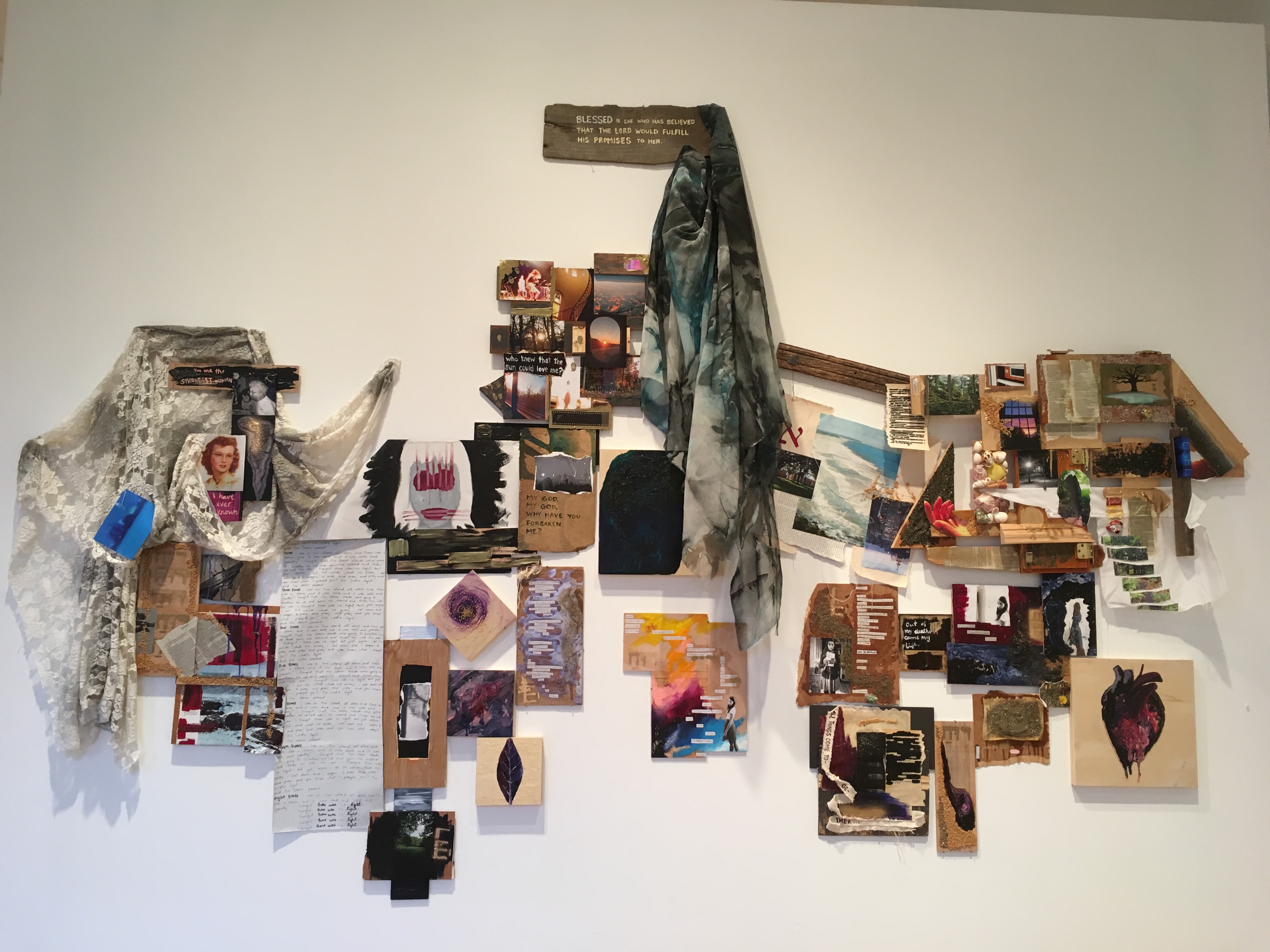

Abstract artwork boils an idea, a thought or an emotion down to its basic essence. But its universal aspect can also be frustrating because it lacks individuality, an intimacy that brings one closer to the artist. Abstraction generalizes emotion, simplifying it to a universally shared kernel. But no one experiences their sorrows and blisses the same way. To generalize the emotional experience is to make it recognizable to everyone but not belong fully to any particular person.
In her work, Amanda Tobin ’17, while remaining true to the abstract ideal, differs in that each emotion and concept portrayed is so uniquely hers and intimate. We can immediately associate specific overarching emotions with her work, but each piece contains a varied set of nuances and eccentricities that makes it distinctly hers. The energy and the personality that generated this work are uniquely present in each aspect of her piece.
A common thread throughout her work is the use of string. The twine glides seamlessly, unobtrusively in some pieces, but it becomes wadded in others. In one, the twine wraps around the loose, rough-edged canvas to warp it slightly. Because of thread’s power of connection, we associate it often with the continuity of our lives and our connections to other people. At times, our lives and our connections are straightforward. At other times, it tangles like a Gordon knot. But what is so interesting about the string that physically changes the shape of the canvas in the present moment is the idea of the past shaping the moment experienced now. One can see the thread as the past, everything that has led up to this point, and this thread leads up the point with which the viewer interacts at any moment. The thread thus parallels how our pasts actively shape our current experiences.
The intimacy comes through, especially in Tobin’s interaction with her religion in the pieces. A prime example of this is “And the Darkness Shall Never Overcome It” (a title taken directly from the Bible). In this piece, a golden-rod yellow sprawl of paint trickles down and touches the smoky peak of a black counterpart rising from the bottom of the canvas. The yellow seems solid, permanent, like gold, whereas the black seems ephemeral, which reflects its religious title. The yellow’s position at the top of the canvas also reflects its superior position to the darkness. Its composition invokes “let there be light,” since the light and darkness race to meet at their peaks, frozen at the moment before impact. One feels as if they are a moment away from a big bang, the creation that begins as soon as light makes contact with the darkness.
In strikingly different ways, both Tobin’s and senior Madison Carbone’s theses examine identity. Tobin’s radiates from the inside, describing identity through the lens of tailored emotions and personal faith, whereas Carbone’s works from the outside, showing how our bodies shape our identities. A visually eloquent example of this is Carbone’s piece, comprised of a mirror with swarms of what we can assume are black fingerprints crowding the surface. In the center is a black oval that echoes the smaller shapes surrounding it. Both mirrors and fingerprints are different ways of identification. Fingerprints are a way for the system to identify someone, like a barcode. But a mirror is the way in which we identify and learn about ourselves. The viewer can stand in front of the piece so that the black oval completely consumes their head, symbolic of how the system choosing to identify one (through one’s fingerprints, through one’s body) overwhelms them and prevents them from seeing and identifying their true self, reflected in the mirror.
Rather than pressing her emotions into the canvas, Carbone presses her body, leaving Rorschach inkblot-type marks on her largest piece of the installation. Inkblots, and the shapes we find in them, appear different to the individuals observing them. Perhaps the inkblot representation of her body suggests the moment of interpretation each person possesses when looking at an actual body. It suggests that a way a person’s body is identified and interpreted largely depends on the frame of mind of the viewer. Carbone includes a series of photographs depicting bodies enrobed in black-and-white paint, even one showing a moment of her working on the Rorschach-esque piece. The exhibit juxtaposes these photographs with the body-stamped piece. In the photographs, the paint largely highlights and takes the true form of the body as it clings to the skin. However, on the canvas, the shape of the body depends largely on how the paint lays and dries. In this way, the shape of the body depends on the paint. We see the body defined and being defined in two different ways with two different outcomes. Yet each is a valid definition of the body.
The hard work Carbone and Tobin have put into their theses is undeniable. This is compounded with the work it takes to allow one’s self to be vulnerable and open. It is not possible to relay in a scanty article the thoughtfulness and beauty of their work. The theses appeal to the viewer aesthetically but also connect with them emotionally.
They will be displayed in the Eli Marsh Gallery until May 21st* from 10 a.m. to 4 p.m.
*Correction: previously said gallery ran until May 8th.